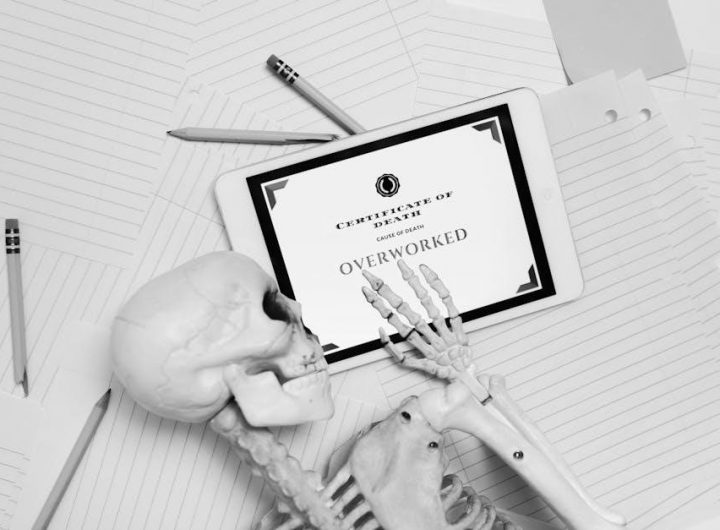
Welcome to the Esthetician Exam Study Guide, your comprehensive resource for mastering the exam. This guide is designed to help you navigate the exam process with confidence.
Importance of Preparation for the Esthetician Exam
Preparation is key to excelling in the esthetician exam, as it ensures you are well-versed in both theoretical and practical aspects of the profession. A thorough study plan helps build confidence and competence, allowing you to tackle complex questions and scenarios with ease. Without proper preparation, you may struggle with the exam’s challenging format, including multiple-choice questions and time constraints. Additionally, preparation helps you master essential skills like skincare science, facial treatments, and sanitation protocols. By dedicating time to study, you can identify and improve weak areas, reducing exam anxiety and ensuring a focused approach. A well-prepared candidate is more likely to achieve a high score, paving the way for a successful career in esthetics.
- Understand the exam structure and content.
- Master skincare science and practical techniques.
- Develop effective time management skills.
- Reduce exam anxiety and stay focused.
Investing time in preparation ensures you are fully equipped to succeed and meet the high standards of the esthetician profession.
Overview of the Esthetician Exam Structure
The esthetician exam is divided into two main sections: a written theory portion and a practical skills demonstration. The written exam assesses knowledge of skincare science, sanitation protocols, and industry standards, while the practical exam evaluates hands-on techniques like facials, waxing, and makeup application. The exam is timed, with specific durations for each section, ensuring candidates can complete all tasks efficiently. Understanding the structure helps candidates allocate study time effectively and prepare for both theoretical and practical challenges. Familiarity with the format reduces exam-day nerves and allows for a more focused approach.
- Written theory section: Multiple-choice questions on skincare, sanitation, and theory.
- Practical section: Demonstration of skills like facials, waxing, and makeup.
- Time limits for each section to ensure efficient completion.
Knowing the exam structure is crucial for targeted preparation and confidence on exam day.
Understanding the Esthetician Exam Format
The esthetician exam combines written and practical assessments to evaluate both knowledge and skills, ensuring comprehensive competence in skincare and beauty treatments.
- Written assessments test theoretical knowledge.
- Practical assessments evaluate hands-on skills.
- Both sections are essential for licensure.
Types of Questions and Exam Duration
The esthetician exam features multiple-choice questions, true/false statements, and scenario-based problems to assess knowledge and practical skills. The exam typically lasts 2-3 hours, depending on the state.
- Multiple-choice questions test theoretical knowledge.
- True/false statements evaluate understanding of key concepts.
- Scenario-based questions assess problem-solving abilities.
- Time management is crucial to complete all sections.
Understanding the question types and time allocation helps candidates prepare effectively and reduce exam-day stress.
Key Topics Covered in the Exam
The esthetician exam covers a wide range of topics to ensure competency in skincare and beauty services. These include skincare science, facial treatments, body therapies, and hair removal techniques.
- Skin anatomy, conditions, and analysis.
- Sanitation, safety, and infection control protocols.
- Facial and body treatment procedures.
- Waxing, sugaring, and other hair removal methods.
- Massage techniques and their benefits.
- State-specific laws and professional standards.
Mastering these topics ensures a strong foundation for passing the exam and excelling in the field.
Creating a Study Plan for Success
Develop a structured study plan to ensure steady progress toward exam readiness. Begin by assessing your current knowledge and identifying areas needing improvement. Break down the material into manageable sections, focusing on key topics like skincare science, facial treatments, and sanitation. Set realistic, achievable goals for each study session, allowing time for both review and practice. Create a schedule that balances study time with breaks to maintain focus and prevent burnout. Regularly review and adjust your plan to stay on track and address any weaknesses. Incorporate active learning techniques, such as summarizing notes or teaching concepts to others, to enhance retention. Utilize recommended study resources and seek support from study groups or mentors to stay motivated and informed. Prioritize self-care by ensuring adequate rest, nutrition, and stress management to maintain peak performance. Celebrate small milestones to stay positive and motivated throughout your preparation journey.
Setting Realistic Study Goals and Deadlines
Setting realistic study goals and deadlines is crucial for effective preparation. Start by breaking down the exam material into manageable sections, focusing on key topics like skincare science and sanitation. Assess your current knowledge to identify strengths and weaknesses, then create specific, measurable objectives. Establish a timeline with clear deadlines, ensuring each goal is achievable within the allotted time. Prioritize areas that require the most attention and allocate sufficient time for practice and review. Regularly track your progress to stay on course and make adjustments as needed. Incorporate regular review sessions and practice tests to reinforce learning. By setting clear, attainable goals, you’ll maintain focus, build confidence, and ensure steady progress toward exam success.
Time Management Strategies for Effective Studying
Effective time management is essential for successful exam preparation. Start by creating a structured study schedule, allocating specific time blocks for each topic. Use the Pomodoro Technique—25 minutes of focused study followed by a 5-minute break—to maintain concentration and avoid burnout. Prioritize tasks based on importance and urgency, using tools like the Eisenhower Matrix to organize your study plan; Minimize distractions by designating a quiet, dedicated study space and setting specific times to check notifications. Incorporate regular breaks to recharge and improve retention. Consistency is key; stick to your schedule and review progress weekly to stay on track. By managing your time wisely, you’ll cover all necessary material efficiently and reduce exam-day stress.

Key Subject Areas to Focus On
Focus on skincare science, facial treatments, body therapies, hair removal methods, and sanitation protocols to excel in the esthetician exam. These areas are crucial for a successful career.
Skincare Science and Theory
Skincare science and theory form the foundation of esthetic practice, covering skin anatomy, physiology, and ingredient analysis. Understanding how products interact with the skin is crucial for creating effective treatments. Study the skin’s layers, pH balance, and conditions like acne, aging, and hyperpigmentation. Learn about active ingredients, their benefits, and potential reactions. This knowledge enables you to tailor treatments to individual needs, ensuring safety and efficacy. Familiarize yourself with product formulations and how they address specific concerns. Mastering these concepts will help you make informed decisions and deliver personalized skincare solutions. Dedicate time to understanding the science behind ingredients and their effects on various skin types and conditions.
Facial Treatments and Procedures
Facial treatments and procedures are central to an esthetician’s practice, focusing on enhancing skin health and appearance. Key areas include cleansing, exfoliation, extraction, and masking. Understand the steps for conducting a basic facial, including skin analysis and product selection. Study advanced techniques like microdermabrasion, chemical peels, and enzymatic treatments. Learn about the benefits and contraindications of each procedure to ensure safe and effective outcomes. Practice customizing treatments based on skin types and concerns, such as acne, aging, or sensitivity. Mastering these skills will allow you to deliver personalized care, addressing client needs and achieving desired results. This section emphasizes hands-on application and theoretical knowledge to build confidence in performing facial treatments professionally.

Body Treatments and Massage Techniques
Body treatments and massage techniques are essential skills for estheticians, focusing on relaxation, detoxification, and skin rejuvenation. Study various massage methods, such as Swedish, deep tissue, and lymphatic drainage, understanding their benefits and applications. Learn about body wraps, scrubs, and exfoliation techniques to improve skin texture and tone. Familiarize yourself with equipment like brushes, mitts, and thermal tools. Understand contraindications and safety protocols to ensure client comfort and safety. Practice proper draping and sanitation procedures to maintain professionalism. This section emphasizes the importance of tailoring treatments to individual needs, whether for relaxation, therapeutic benefits, or aesthetic enhancement. Mastering these techniques will enhance your ability to provide holistic care and satisfy client expectations.
Waxing, Sugaring, and Hair Removal Methods
Waxing and sugaring are popular hair removal techniques that estheticians must master. Study the differences between hot and cold wax, as well as sugaring paste, and their applications for various body areas. Learn proper techniques for removing hair from sensitive zones like eyebrows, bikini lines, and legs. Understand pre- and post-care instructions to ensure client comfort and prevent irritation. Familiarize yourself with sanitation and safety protocols to maintain hygiene. Additionally, explore alternative methods like tweezing and depilatory creams. Practice identifying contraindications, such as sensitive skin or certain medical conditions, to avoid adverse reactions. This section will help you develop the skills and confidence to perform safe and effective hair removal services, catering to diverse client needs and preferences.
Sanitation, Safety, and Infection Control

Sanitation, safety, and infection control are critical components of esthetic practice. Study state board regulations and standard protocols to ensure a clean and safe environment for clients. Learn proper handwashing techniques, the use of personal protective equipment (PPE), and sterilization methods for tools and equipment. Understand how to prevent cross-contamination and maintain a hygienic workspace. Familiarize yourself with proper disposal of hazardous materials and the use of disinfectants. Review client preparation procedures, including sanitation of the treatment area and appropriate draping. Understand contraindications and when to refuse services due to health risks; Mastering these practices will protect both you and your clients, ensuring a professional and safe experience. Proper sanitation is not just a requirement—it’s essential for building trust and avoiding legal or health complications.

Test-Taking Strategies and Tips
Master effective test-taking strategies to enhance your exam performance. Manage your time wisely, read each question thoroughly, and eliminate incorrect options to select the right answers.
How to Approach Multiple-Choice Questions

When tackling multiple-choice questions, start by reading each question carefully to understand what is being asked. Identify key terms and focus on the main concept. Eliminate obviously incorrect answers first to narrow down your options. If unsure, use the process of elimination and make an educated guess. Pay attention to common question types, such as those testing your knowledge of skincare procedures, ingredient effects, or sanitation protocols. Avoid changing your initial answer unless you are certain it is wrong. Stay calm, manage your time wisely, and ensure you answer every question to maximize your score.
Managing Exam Anxiety and Staying Focused
Exam anxiety can hinder performance, so it’s crucial to develop strategies to stay calm and focused. Practice deep breathing exercises, positive visualization, and mindfulness to reduce stress. Break down the exam into manageable sections, and set small, achievable goals to maintain concentration. Avoid overthinking and focus on one question at a time. A well-rested mind is essential, so ensure adequate sleep before the exam. Stay hydrated and energized with healthy snacks to maintain mental clarity. Remind yourself of your preparation and capabilities to boost confidence. By staying composed and systematic, you can approach the exam with a clear and focused mindset, ensuring optimal performance.

Utilizing Study Resources Effectively
Effectively utilizing study resources involves prioritizing essential materials, managing time wisely, and actively engaging with content to maximize learning and retention for exam preparation success.

Recommended Textbooks and Study Materials
Investing in the right study materials is crucial for success. Popular textbooks like Milady’s Standard Esthetics and The Art of Shaping provide in-depth coverage of esthetician topics. Online resources, such as digital guides and practice exams, offer flexible learning options. Flashcards and study groups can enhance retention and understanding. Utilize state-specific study guides to familiarize yourself with local regulations. Additionally, video tutorials and webinars can visually demonstrate techniques, aiding in practical skill mastery. Prioritize materials that align with your exam format and focus on weak areas identified during practice tests. Combining these resources creates a well-rounded study approach, ensuring you’re thoroughly prepared for the exam.
Online Resources and Practice Exams
Online resources and practice exams are invaluable tools for exam preparation. Websites like BeautyExam.com and EstheticianExam Prep.com offer comprehensive practice tests that simulate real exam conditions. These platforms help you assess your knowledge, identify weak areas, and improve time management. Additionally, forums and study groups on social media provide opportunities to connect with peers and share study tips. Many online resources include video tutorials, interactive quizzes, and downloadable study guides. Utilizing these tools regularly can enhance your understanding of key concepts and boost confidence. Prioritize platforms that align with your exam format and focus on areas where you need improvement. Consistent practice with online resources ensures a well-prepared and confident approach to the esthetician exam.
Practicing with Sample Questions
Practicing with sample questions helps you understand the exam format, identify weak areas, and build confidence. Regular practice enhances your ability to perform well under timed conditions.
Benefits of Taking Practice Tests
Taking practice tests is a crucial step in preparing for the esthetician exam. It helps you familiarize yourself with the exam format, question types, and time constraints. Regular practice tests allow you to identify areas where you need improvement, enabling targeted studying. Additionally, practice tests build confidence by reinforcing your knowledge and reducing exam-day anxiety. They also enhance your ability to manage time effectively, ensuring you can complete the exam within the allotted period. By simulating real test conditions, practice tests provide valuable insights into your readiness and help you refine your test-taking strategies. Consistent practice leads to better retention of key concepts and improved overall performance.
Analyzing Weak Areas Through Practice
Practice tests are invaluable for identifying and addressing weak areas in your knowledge. By reviewing your results, you can pinpoint specific topics or question types where you struggle. This targeted insight allows you to focus your study efforts on improving these areas. Regular practice helps you track your progress over time, ensuring that gaps in understanding are closed. Additionally, analyzing your mistakes enables you to refine your study plan, allocating more time to challenging subjects. Addressing weak areas through practice not only boosts your confidence but also enhances your overall performance. Consistent review and improvement are key to mastering the material and achieving success on the esthetician exam.

Final Preparations Before the Exam
Final preparations involve organizing study materials, confirming exam details, and mentally rehearsing key concepts. Ensure all tools are ready and review last-minute notes for confidence.
Reviewing Key Concepts and Notes
Reviewing key concepts and notes is essential for reinforcing memory and ensuring familiarity with exam content. Focus on summarizing major topics, such as skincare science, facial treatments, and sanitation protocols. Use flashcards or concise summaries to simplify complex information. Skim through textbooks, notes, and study guides to identify and reinforce weak areas. Organize information into categories, like skincare theory, waxing techniques, or infection control, to create a structured approach. Pay special attention to diagrams, charts, and procedures, as these are often highlighted in exams. By systematically revisiting your materials, you can fill knowledge gaps and build confidence. Consistent review ensures you’re well-prepared to tackle the exam with clarity and precision.
Ensuring Proper Rest and Nutrition

Proper rest and nutrition are vital for optimal performance on exam day. Aim for 7-8 hours of quality sleep to ensure your mind is sharp and alert. A well-balanced diet rich in vitamins, minerals, and antioxidants supports brain function and energy levels. Incorporate foods like lean proteins, whole grains, and fresh fruits and vegetables into your meals. Stay hydrated by drinking plenty of water throughout the day. Avoid heavy meals, sugary snacks, and excessive caffeine, as they can cause energy crashes and discomfort. Prioritize a calm and consistent sleep routine to maintain mental clarity. By fueling your body and mind appropriately, you’ll feel more focused, confident, and prepared to tackle the exam with ease.
Congratulations on completing your study journey! Trust your preparation, stay positive, and approach the exam with confidence. Best of luck on your path to becoming a licensed esthetician!
Staying Confident and Positive
Confidence and positivity are key to excelling on your esthetician exam. Remind yourself of your hard work and preparation—this mindset will help you stay calm and focused. Believe in your abilities and trust the knowledge you’ve gained. A positive attitude can significantly impact your performance, so avoid self-doubt and focus on your strengths. Visualize success and maintain a growth mindset, knowing that challenges are opportunities to learn. Surround yourself with supportive people who encourage you, and engage in self-care practices like meditation or deep breathing to manage stress. Remember, confidence grows with practice, so embrace your journey and approach the exam with determination and optimism.
Final Tips for Exam Day
On exam day, arrive early to avoid last-minute stress and ensure you’re settled before the test begins. Dress comfortably and bring all required materials, such as a government-issued ID and any documents specified. Eat a nutritious meal to maintain energy levels and stay hydrated. Avoid cramming, as it can increase anxiety—instead, take deep breaths and remind yourself of your preparation. Read each question carefully, manage your time wisely, and skip difficult questions initially, returning to them later. Stay calm and focused, and avoid rushing through answers. After completing the exam, review your responses if time allows. Trust your knowledge and stay positive. You’ve prepared well—now is the time to showcase your skills confidently!
 citi program quiz answers pdf
citi program quiz answers pdf  upper back stretches pdf
upper back stretches pdf  solomon book of wisdom pdf
solomon book of wisdom pdf  the snows of kilimanjaro short story pdf
the snows of kilimanjaro short story pdf  imagine john lennon sheet music piano pdf
imagine john lennon sheet music piano pdf  contractor certificate of completion pdf
contractor certificate of completion pdf  dsc impassa user guide
dsc impassa user guide  2023 hyundai santa fe manual
2023 hyundai santa fe manual